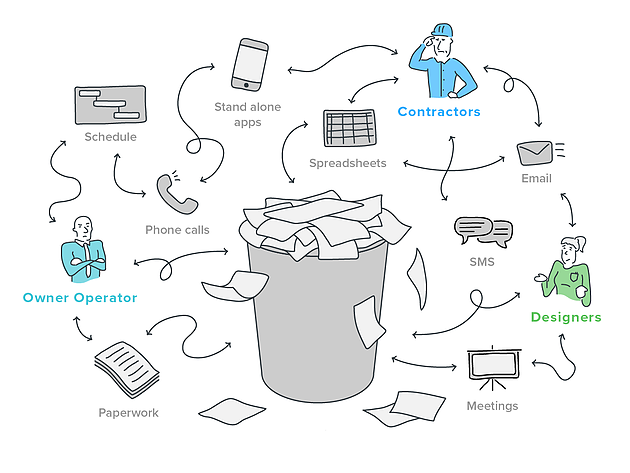Enhancing Operations Efficiency: Designer's Expert Approaches for Construction Paper Monitoring
In the realm of building design and construction, the meticulous administration of records stands as a cornerstone for project success. These approaches not just make sure smooth task development however additionally hold the vital to unlocking enhanced efficiency and precision in the complex world of building paper monitoring.
Trick Record Company Strategies
When taking care of building and construction records, among the vital strategies that engineers use is developing a organized and effective organization system. This system normally entails classifying papers based on their type, such as drawings, requirements, agreements, and permits. By creating clear and distinctive categories, designers can quickly find details details when required, saving time and decreasing errors in the construction procedure.
Within each classification, designers better arrange records by producing subfolders or utilizing numbering systems to represent variations or revisions (construction document management). This ordered framework guarantees that one of the most pertinent and current information is quickly obtainable while maintaining a record of modifications made throughout the task timeline
Furthermore, architects usually make use of digital file administration platforms that use attributes like keyword search functions, version control, and access limitations to improve company and cooperation amongst task stakeholders. These devices streamline the document retrieval process, promote real-time updates, and help with seamless communication, eventually adding to the general success of the building and construction task.
Collaborative System Assimilation
To maximize record monitoring performance in building and construction tasks, engineers flawlessly incorporate collective systems to boost interaction and streamline coordination amongst project stakeholders. By leveraging collaborative platforms such as project management software, cloud-based storage systems, and interaction devices, designers can produce a centralized hub for all project-related records and interaction channels. These platforms allow staff member to gain access to, review, and collaborate on records in real-time, minimizing delays and the risk of mistakes connected with conventional file monitoring approaches.
Collaborative system integration additionally fosters openness and accountability within the job team, as all stakeholders have exposure right into the most up to date task updates and revisions. By centralizing interaction and paper sharing, architects can make sure that all team members are functioning from the most updated details, decreasing the possibilities of misconceptions or conflicts arising because of outdated papers.
Additionally, collective systems make it possible for seamless partnership in between designers, contractors, customers, and various other task stakeholders, advertising a more natural and effective job process. By breaking down communication obstacles and promoting details exchange, designers can drive efficiency and technology in construction jobs, inevitably bring about successful task results.
Variation Control Ideal Practices
Executing efficient version control methods is vital for preserving record precision and uniformity in building projects. By establishing a clear system for handling revisions, project teams can make certain that every person is functioning from one of the most updated documents, minimizing the threat of errors and discrepancies during the building and construction phase.
Among the essential finest practices for variation control is to appoint distinct identifiers per file variation. This can be attained by utilizing a numbering system or day stamp that plainly shows the order of revisions. By clearly identifying each version, team members can easily track the progression of the file and identify the most recent version.

Automation Tools for Efficiency

Paper control software program, like Procore or PlanGrid, centralizes job paperwork, making it conveniently accessible to all stakeholders. These platforms enable for real-time cooperation, variation control, and automated back-ups, safeguarding against data loss. Furthermore, Structure Details Modeling (BIM) software automates the generation of building drawings and makes sure my company that adjustments are integrated throughout all related documents.
Integrating automation tools with cloud storage options better boosts accessibility and safety and security. By automating the paper administration procedure, job groups can concentrate their time and initiative on value-adding activities, eventually enhancing efficiency and job end results.
Secure Information Monitoring Solutions
Effectively guarding and taking care of task information is vital in the building and construction sector to make sure discretion and stability throughout the job lifecycle. Protected data management remedies play an essential role in protecting delicate info from unauthorized access or violations. Building companies can use encrypted cloud storage services to securely save and share task documents with licensed employees. Carrying out gain access to controls, such as customer authentication and approval setups, makes sure that just accredited people can view or change sensitive information.
Furthermore, using electronic rights monitoring (DRM) tools adds an added layer of safety by stopping the unauthorized circulation or replication of project papers. Regular data back-ups are essential to alleviate the threat of data loss because of unexpected circumstances like equipment failures or cyber-attacks. Collaborative systems with integrated security functions allow smooth communication and documents sharing amongst project staff member while preserving information integrity.
Conclusion
Finally, implementing crucial paper organization techniques, integrating joint platforms, practicing version control finest techniques, making use of automation tools, and embracing safe information monitoring remedies are important techniques for improving process effectiveness in building and construction record management. These expert techniques can improve processes, improve communication, guarantee accuracy, and maintain data security throughout the construction project lifecycle.
In the realm see it here of architectural design and construction, the meticulous management of files stands as a foundation for project success. These techniques not only ensure smooth task development however also hold the key to opening boosted efficiency and precision in the intricate world of building document administration.
To enhance paper monitoring effectiveness in construction tasks, designers seamlessly incorporate collective platforms to boost communication and streamline control among job stakeholders. These systems enable group participants to accessibility, evaluation, and work together on files in real-time, reducing hold-ups and the danger of errors associated with traditional file management methods.
Making use of automation devices in construction document administration dramatically improves effectiveness and improves procedures for job groups. construction document management.